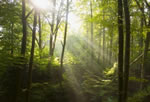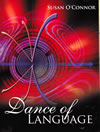Archetypal Symbolism

 Having knowledge of and using archetypal symbolism in both reading and writing can quickly improve one’s ability
to master the language.
Universal images, or symbols that Carl Jung termed archetypes and archetypal motifs, are not new to literature.
Although the use of symbols in writing throughout the ages has been an indication of a people who lived close to their symbolic roots,
writers have continued using these same symbols today to express greater depth of imagery in their work.
Ideas and images unique to all human beings and their cultures across time periods may help to explain the universal quality of symbols.
Even if one disagrees with Jung’s theory that people everywhere understand archetypal symbols because they have been genetically encoded
in their collective unconscious, no one can argue with the universal nature of a myriad of images observable in literature.
The tree, for example, may be found as a central image in many pieces of writing. Storytellers from world mythology incorporated trees
in their religious beliefs, even in their creation stories. The tree, often a central figure or significant aspect of the setting,
is sometimes referred to as the imago mundi, or image of the world, and in the classic stories A Separate Peace and To Kill a Mockingbird,
a particular tree in each story is central to the characters’ world, often taking on a significant role in the plot.
Other literary archetypes as well contribute to the reader’s increased understanding of a work. Major archetypes include the circle,
seasons, colors, numbers, animals, a garden, characters such as the savior, the trickster, the wise old man or woman, a witch, a dragon,
and the infinite list goes on.
Having knowledge of and using archetypal symbolism in both reading and writing can quickly improve one’s ability
to master the language.
Universal images, or symbols that Carl Jung termed archetypes and archetypal motifs, are not new to literature.
Although the use of symbols in writing throughout the ages has been an indication of a people who lived close to their symbolic roots,
writers have continued using these same symbols today to express greater depth of imagery in their work.
Ideas and images unique to all human beings and their cultures across time periods may help to explain the universal quality of symbols.
Even if one disagrees with Jung’s theory that people everywhere understand archetypal symbols because they have been genetically encoded
in their collective unconscious, no one can argue with the universal nature of a myriad of images observable in literature.
The tree, for example, may be found as a central image in many pieces of writing. Storytellers from world mythology incorporated trees
in their religious beliefs, even in their creation stories. The tree, often a central figure or significant aspect of the setting,
is sometimes referred to as the imago mundi, or image of the world, and in the classic stories A Separate Peace and To Kill a Mockingbird,
a particular tree in each story is central to the characters’ world, often taking on a significant role in the plot.
Other literary archetypes as well contribute to the reader’s increased understanding of a work. Major archetypes include the circle,
seasons, colors, numbers, animals, a garden, characters such as the savior, the trickster, the wise old man or woman, a witch, a dragon,
and the infinite list goes on.
